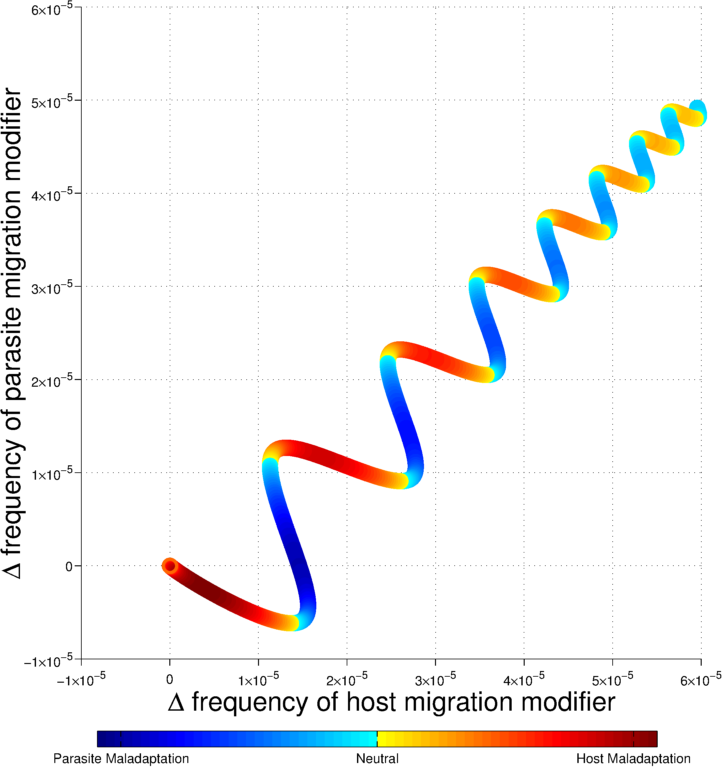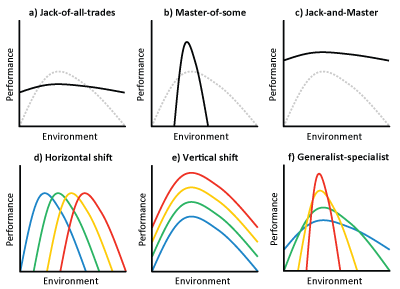Building on my graduate studies, I developed evolutionary genetic theory for understanding how coevolution between hosts and their symbionts affects co-transmission of host and symbiont genomes. I developed population genetic models and computer simulations to investigate the evolution of symbiont transmission. I have found that, without stochastic forces like mutation, conditions favoring vertical transmission of an obligate symbiont are restrictive (Drown, Zee, et al. 2013). My theoretical work shows that such intimate host-symbiont coevolution requires a high degree of specificity of the fitness interactions between both players. In Drown, Dybdahl and Gomulkiewicz (2013), I show that antagonistic host-pathogen interactions generate both spatial and temporal fluctuations in fitness and thus favor increased dispersal rates. Under certain conditions, where interactions are strong, I find that there is a continuous evolutionary escalation in dispersal rates, which contributes to explaining the ubiquity of dispersal in nature. The long-term evolution of dispersal described by my model provides an understanding of the empirical evidence of local adaptation necessary for host-parasite interactions to drive the evolution of host and pathogen dispersal.
- Drown, D. M., & Wade, M. J. (2014). Runaway coevolution: adaptation to heritable and nonheritable environments. Evolution, 68(10), 3039-3046. https://doi.org/10.1111/evo.12470
- Drown, D. M., Zee, P. C., Brandvain, Y., & Wade, M. J. (2013). Evolution of transmission mode in obligate symbionts. Evolutionary ecology research, 15(1), 43-59. https://www.ncbi.nlm.nih.gov/pmc/articles/PMC3965207/
- Drown, D. M., Dybdahl, M. F., & Gomulkiewicz, R. (2013). Consumer-resource interactions and the evolution of migration. Evolution, 67(11), 3290-3304. https://doi.org/10.1111/evo.12194
- Gomulkiewicz, R., Drown, D. M., Dybdahl, M. F., Godsoe, W., Nuismer, S. L., Pepin, K. M., Ridenhour, B. J., Smith, C. I., & Yoder, J. B. (2007). Dos and don’ts of testing the geographic mosaic theory of coevolution. Heredity, 98(5), 249-258. https://doi.org/10.1038/sj.hdy.6800949

